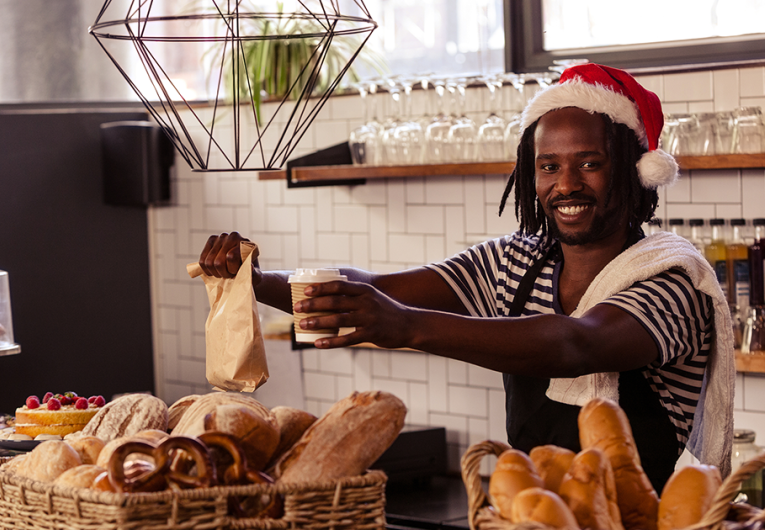
Tips For Changing To A No-Contact Business Model
Small businesses are famous for delivering that personal touch. But in today’s pandemic environment, it’s being delivered in a different way. Business owners are adopting a “no-contact” business model. It’s a way to connect with customers when face-to-face interaction isn’t possible. How are they doing it? Here are some tips for changing to a no-contact model that’s COVID-19 friendly.
Going No Contact
The aim of a no-contact business model is to reduce or modify the physical points of contact you have with customers. Doing so helps reduce the transmission risk of COVID-19 while still providing service to customers. It doesn’t mean you eliminate all contact. Instead, you find ways to redirect the face-to-face ones.
For example, restaurants rely on many physical touches to serve a meal. But some have found a way to reduce them. After the customer reviews the menu online, they place the order over the phone. Then the restaurant text patrons when the order is ready. Customers call when they arrive at the restaurant. The restaurant then places the order in a secure bin for customers to retrieve. No physical contact is required for the transaction.
These principles can be applied to a number of businesses. Here are some tips to help you achieve a no-contact model:
- Redirect the buying process –What if retail shoppers could browse and checkout online or on the phone? This might be ideal for repeat customers who are already familiar with your products. A similar redirect strategy could be used in a service business. For example, some realtors are offering virtual home tours to house hunters instead of in-person visits.
- Offer contactless payment and receipt options – Some debit/credit cards and smartphones allow customers to tap or wave their card or device over the payment reader. The receipt is emailed to them. Your reader will need to accept Near Field Communication (NFC) signals. Business.org offers its picks for best mobile card readers for small businesses.
- Provide options to communicate – Give customers alternatives to face-to-face interaction. Phone and emails are traditional options. But there are others. For example, text messaging allows for quick, short responses. Video conferencing is helpful for detailed conversations where you need to demonstrate something. Some businesses offer a website chat feature.
- Practice social distancing – When you can’t redirect, operate at the CDC-approved 6-foot distance using personal protective equipment. You can also modify the physical environment. Some stores install plexiglass sneeze guards at cash registers to minimize contact. Others space out the checkout line so fewer people are together at one time.
Real-Life Examples
One of the best ways to go no contact is to learn what other small businesses are doing. Here are some real-life examples showing how they’re integrating no-contact principles:
- AC Trash Hauling & More – This Indianapolis-based waste management business schedules pick-up. Customers discard their items outside the home where staff retrieves it without any physical contact. Payment is made online. Take a look at how they promoted the service on their website, in emails and on social media channels.
- Gaelynn Lea – After having to cancel her concert tour, Constant Contact reports violinist holds virtual concerts instead where fans can make donations online. Here’s an example of how she promotes it on Twitter.
- The Farmer’s Daughter Flowers – This family-owned Pittsburg business pivoted from in-store sales to filling orders online. Their website features photos of floral arrangements. That’s also where they detail their no-touch delivery procedure. (Note: If you don’t have an online sales platform, customers could call in their orders based on website photos.)
- Trends Consignment Boutique – The Chicago Tribune reports this business offers online “shopping parties” using Facebook Live. It’s a way to showcase its merchandise without physical contact. The business owner is able to answer live questions and offer ideas. (Note: Another option is to offer individualized FaceTime shopping where staff can “show” callers the product, take payment over the phone and arrange delivery.)
- Jericho Nursery – This Albuquerque-based business offers curbside service to market their plants. Customers schedule drive-up appointments where a staff member will meet them at their car to answer questions, take their order and load up plants (all while social distancing).
A no-contact business model can offer a viable way to stay connected with customers. Some business owners report they’ll continue offering it even after they reopen in-person shopping. See if these success stories inspire you to adopt some no-contact ideas.
The trends, insights, and solutions you need to grow your business.
By signing up, you’re subscribing to our monthly email newsletter, The
Wire. You may unsubscribe at any time.
Your information stays safe with us. Learn more about our privacy
policy.











![[#MSP_NAME#] Logo](/themes/sparklight_business/images/transition-logos/migration-banner-logo-[#MSP_CD#].png)
